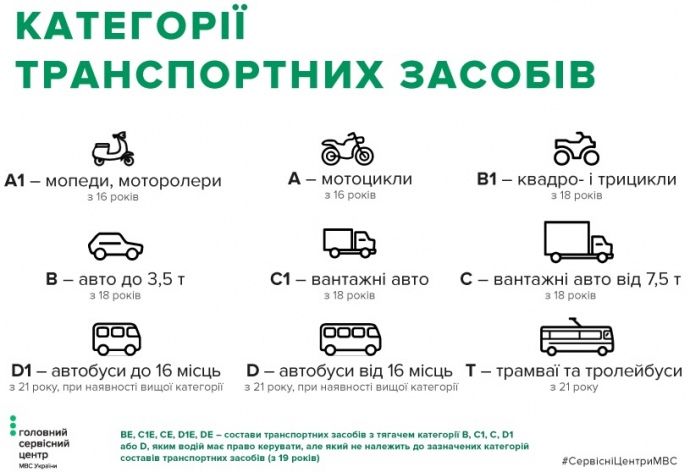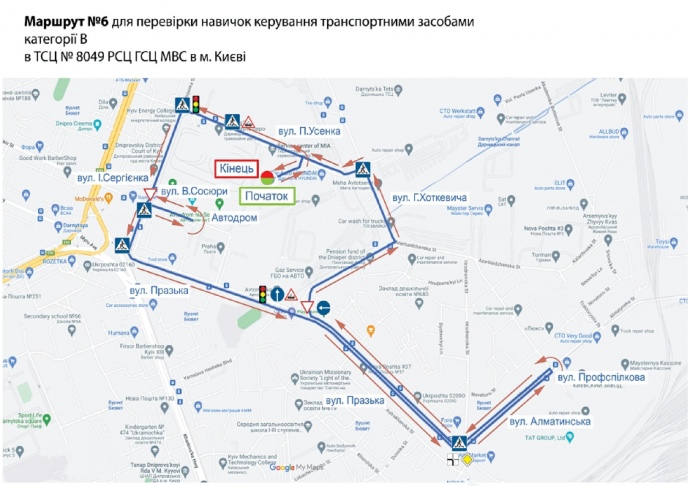"Getting a driver's license in Ukraine has become more challenging and expensive: here's what you need to know."
The conditions in the service centers of the Ministry of Internal Affairs allowed for exams to be taken for money, as there was a lack of control mechanisms at that time. However, the Ministry is working to eliminate corruption risks: it is installing more cameras, reducing blind spots, lifting restrictions on the number of attempts for passing exams, and allowing individuals to study theory independently.
What is the process for obtaining a driver's license and what rules for practical exams have been introduced during the martial law period?
How to obtain a driver's license?
The requirements for obtaining a driver's license have remained unchanged for many years. First, one must pass a theoretical exam, followed by a practical one.
Training and exams are conducted in stages. First, you need to study independently or in a driving school the theoretical part (traffic rules), successfully pass the exam at the service center, and only after that start practical lessons.
Until 2023, the future driver had to undergo both theoretical and practical training in a driving school, which could take place simultaneously, successfully pass internal exams, and only then take exams at the Ministry of Internal Affairs service center.
If a driver passes the exam in a "manual transmission" vehicle, they can drive a car with any type of transmission.
How to pass the theoretical exam at the service center?
The theoretical exam consists of 20 questions, categorized by vehicle type, as well as covering basic and additional topics. The latter vary for each category and are grouped as follows:
- general (basic) knowledge;
- vehicle structure and terminology;
- traffic safety basics;
- first aid.
Each question has between two to five answer options, and only one of them is correct. If two or more categories are opened, the theoretical exam is taken using higher category tickets. That is, if a person wishes to obtain categories B (passenger car) and C (truck), the additional topics will pertain to trucks.

The theoretical exam lasts for 20 minutes. The exam is not passed if three mistakes are made or if the time limit is exceeded. A retake of the theoretical exam can be scheduled after ten days. The number of attempts is unlimited. According to the Ministry of Internal Affairs, one future female driver managed to pass the theory on her ninth attempt.Upon successfully passing the exam, there is a year to complete the practical part of the training and register for the next exam.
How to pass the practical exam at the service center?
To take this exam at the Ministry of Internal Affairs service center, you need to obtain documents confirming the completion of a practical course at an accredited driving school. A list of such educational institutions can be found on the website of the Main Service Center.
In the Standard Training Program for driver training, practical lessons are allocated 40 hours. However, many driving schools, especially in smaller cities, offer students 10-20 hours, arguing that this is sufficient to learn how to drive.
After completing driving school, students have two years to pass the practical exam. The number of attempts, like in theory, is unlimited, and driving can be retaken on the eleventh day after the last attempt.
Exams can be taken in either a service center vehicle or a driving school vehicle.
In the first case, the examiner sits in the vehicle next to the driver, while in the second, an instructor from the driving school sits in the front passenger seat. The examiner sits in the back and observes the actions of the driver and the instructor.
Previously, the practical exam consisted of two parts: exercises in a driving range and in real traffic conditions. However, during the martial law period, the first stage has been canceled for all types of vehicles except mopeds, motorcycles, ATVs, and tricycles.
The driving exam lasts from 20 minutes to 1 hour and is conducted on approved routes, which can be reviewed in advance. However, the specific route for the exam can only be known just before it begins.

The map shows the trajectory of movement, road signs, traffic lights. However, this information may not always be up-to-date due to repairs or street closures, so it's advisable to find a video tutorial on navigating the route. Often, such videos are posted by driving schools.
The practical exam is assessed using a special checklist. It lists the exercises that must be performed. All mistakes are recorded there as well.
The driver is allowed two mistakes. A "yellow card" (first mistake) can be issued after the exam begins if mirrors and seats are not adjusted, the seatbelt is not fastened, or the turn signal is not activated before moving.
Additionally, the checklist includes fatal errors that lead to the termination of the exam:
- the instructor or examiner intervened in the control to prevent an accident;
- the examined person refused to perform the required exercise during the exam.
At the same time, examiners are prohibited from giving commands that could create an emergency situation or lead to a traffic violation. Previously, examiners would deliberately ask future drivers to park under a no-parking sign or turn where it was not allowed, claiming they were testing the drivers' attentiveness.
Before the exam begins, the examiner outlines some mandatory rules, such as "hitting the curb or knocking over a cone results in the termination of the exam."
"I had my second attempt, no mistakes, and they ended the exam. The examiner was ready to congratulate me, just asked me to park first. But I forgot what he warned at the beginning and drove onto the curb to park nicely. And that was it, I was sent for a retake," one driver told EP.
According to him, to successfully pass the exam and minimize risks, it's best to drive quietly, at a speed of 15 km/h, and avoid any unnecessary maneuvers.
What does enhanced control during exams entail?
Since June 1, 2023, a pilot project for transparent driving tests has started in Lviv, Odesa, Vinnytsia, and Kyiv regions. Subsequently, the list of regions was expanded. In classrooms for theoretical exams, recording is conducted with four cameras and a microphone. There will be no blind spots, the Ministry assured.
In passenger cars (category B), video recording in 360 degrees has begun during the exam to capture the hands and feet of the candidate and the examiner. Previously, the camera only recorded the face and the road. Additionally, audio recording of conversations in the cabin has been introduced.
Cameras in the vehicles for the exams will automatically upload videos to a server, preventing any influence